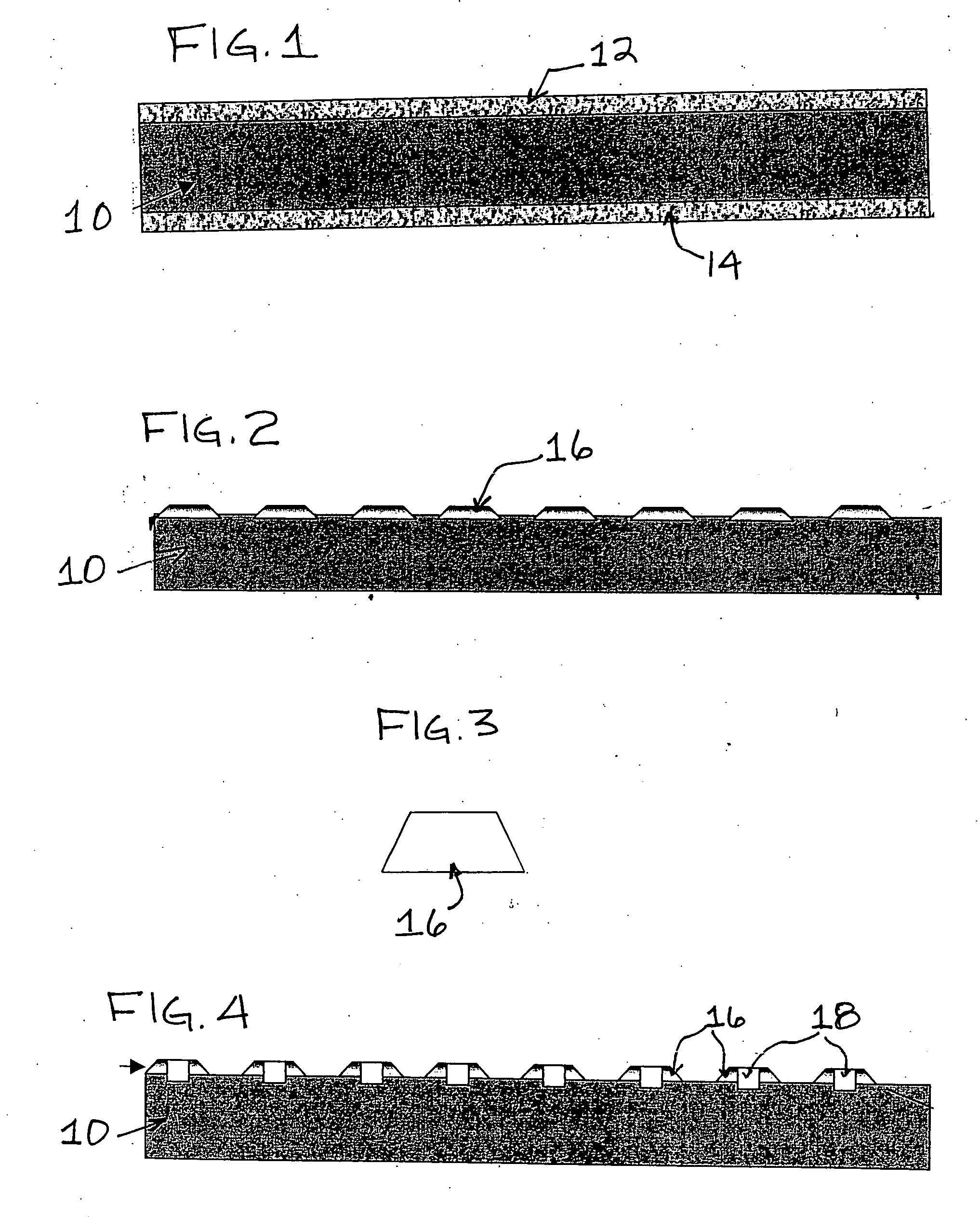High temperature photonic structure for tungstein filament
a technology of photonic structure and tungstein filament, which is applied in the direction of discharge tube/lamp details, gas-filled discharge tubes, nuclear engineering, etc., can solve the problem of reducing the efficiency of the discharge lamp, reducing the energy loss of the lamp to non-visible light output, and not addressing the suppression or conversion of unwanted light emissions. the device, however, suffers from structural instability
- Summary
- Abstract
- Description
- Claims
- Application Information
AI Technical Summary
Problems solved by technology
Method used
Image
Examples
Embodiment Construction
[0020]With reference to FIG. 1, substrate 10, which may be tungsten, magnesium oxide, or any other suitably emissive substrate material, bears a thin metal film 12. Thin metal film 12 may be deposited by electron beam or ion sputtering onto substrate 10, which may be flat or curved. In that instance where substrate 10 is flat, deposition of the thin metal film may be done on both sides of the substrate generating thin film 12 and thin film 14, which may or may not be of the same composition. Though it is not shown herein, the substrate may also be curved in which case the thin film may be deposited in a layered manner. For example, up to 100 nm of thin film may be deposited in increments, or layers, of progressing thickness, i.e., 1 nm, 5 nm, 10 nm, 20 nm, etc., the size and separation of each layer varying linearly with temperature, such that problems of cracking are avoided.
[0021]With regard to the pairing of substrate and thin film materials suitable for use in this process, it i...
PUM
| Property | Measurement | Unit |
|---|---|---|
| melting point | aaaaa | aaaaa |
| wavelengths | aaaaa | aaaaa |
| melting point | aaaaa | aaaaa |
Abstract
Description
Claims
Application Information
 Login to View More
Login to View More - R&D
- Intellectual Property
- Life Sciences
- Materials
- Tech Scout
- Unparalleled Data Quality
- Higher Quality Content
- 60% Fewer Hallucinations
Browse by: Latest US Patents, China's latest patents, Technical Efficacy Thesaurus, Application Domain, Technology Topic, Popular Technical Reports.
© 2025 PatSnap. All rights reserved.Legal|Privacy policy|Modern Slavery Act Transparency Statement|Sitemap|About US| Contact US: help@patsnap.com



